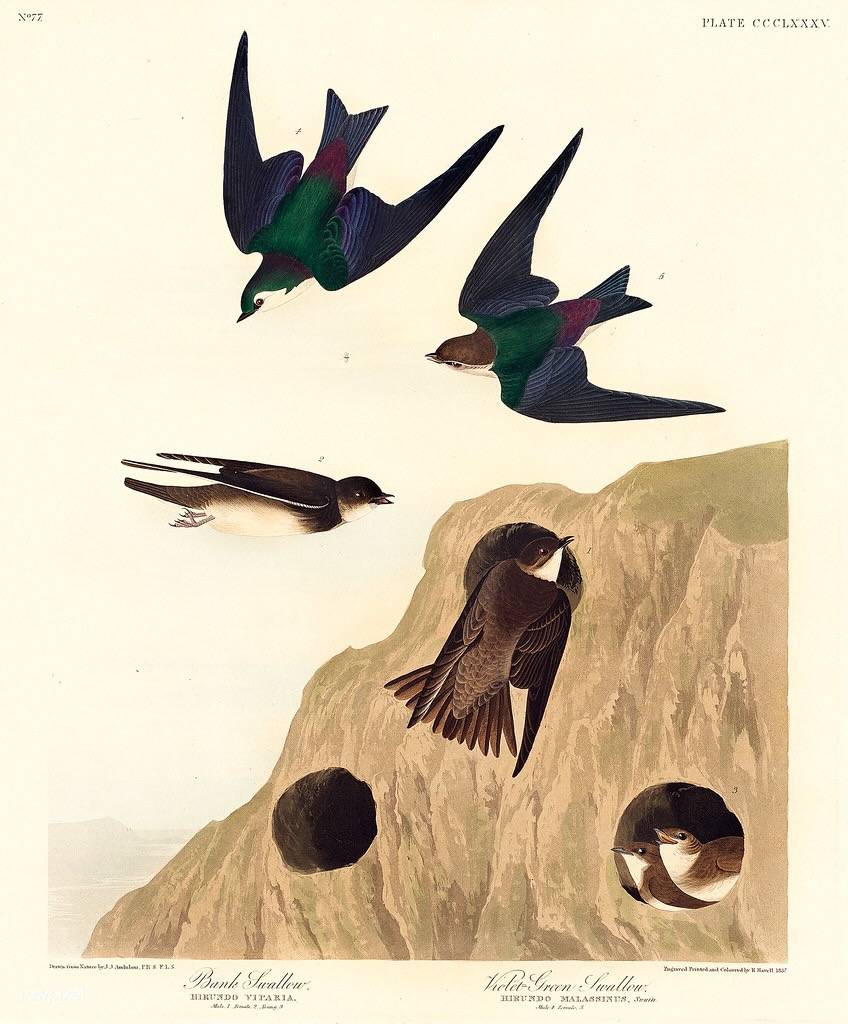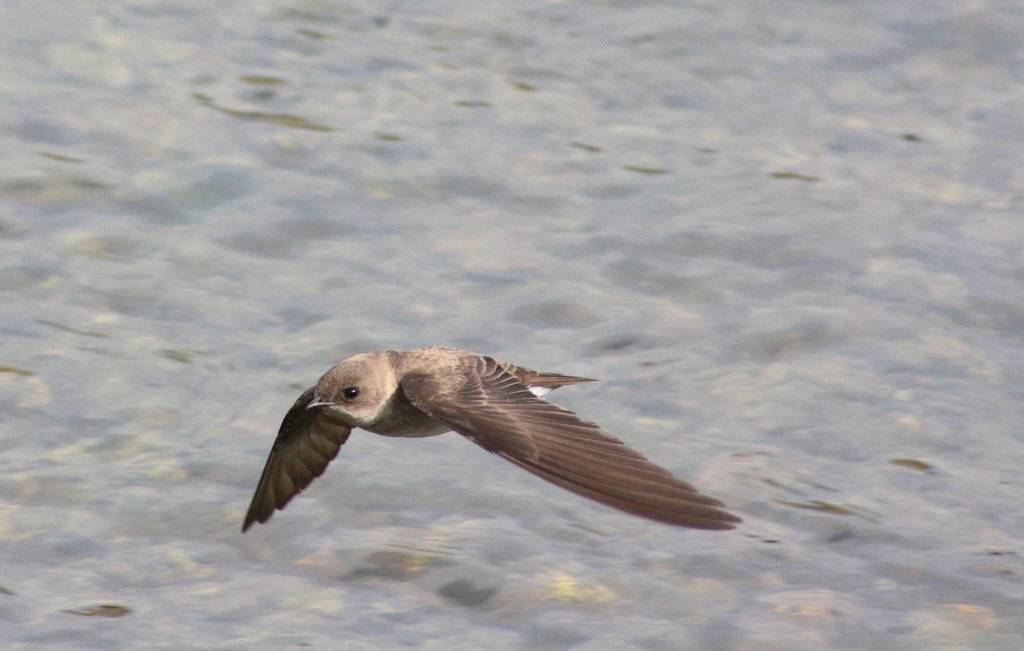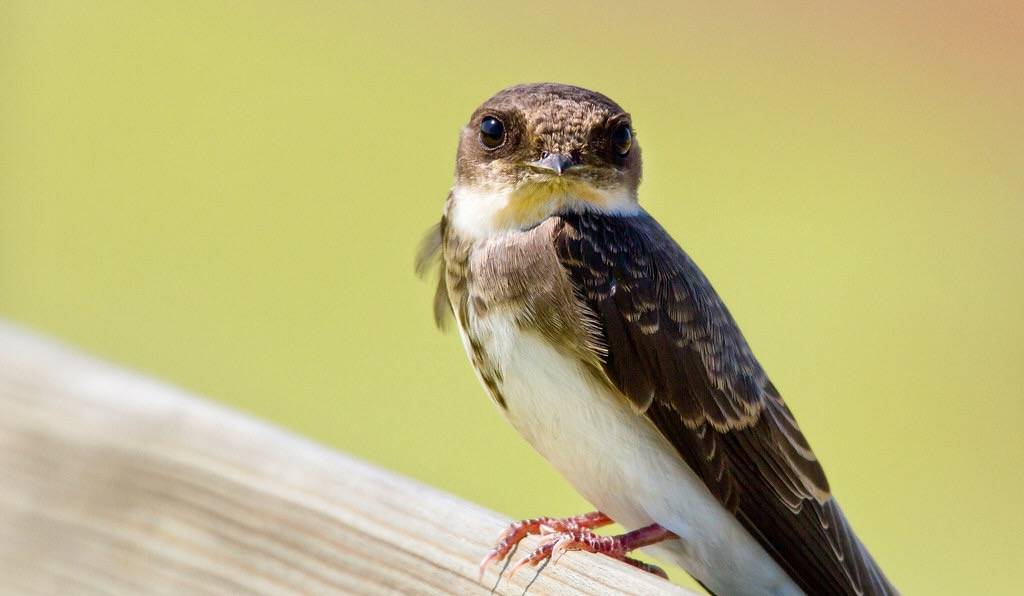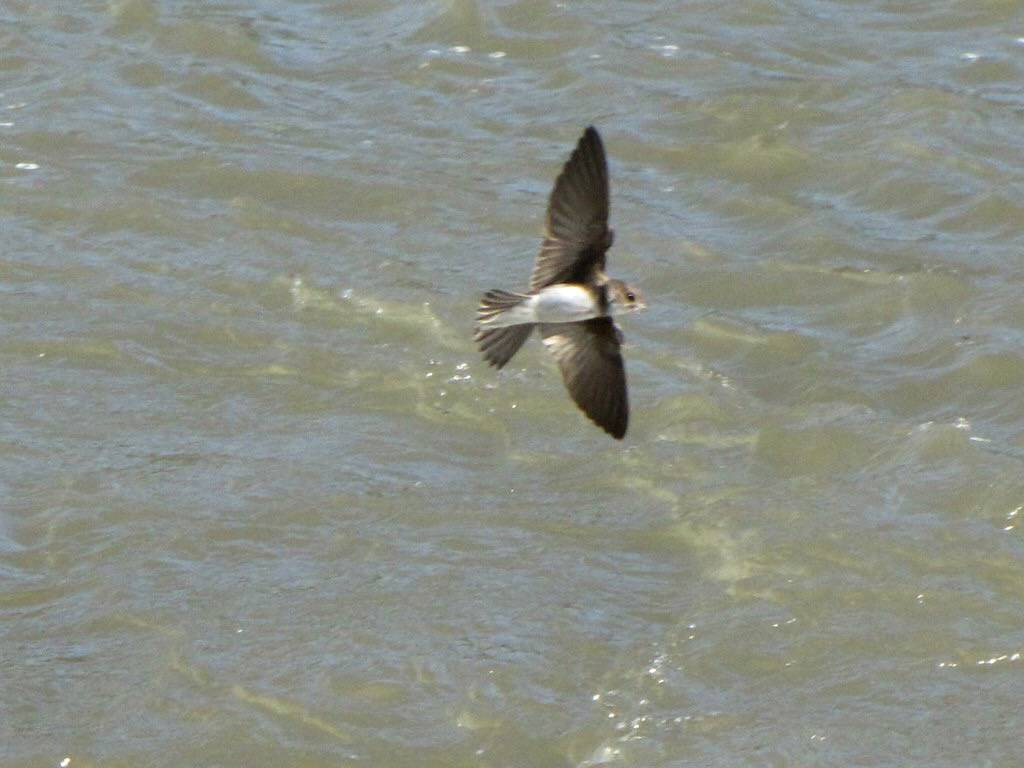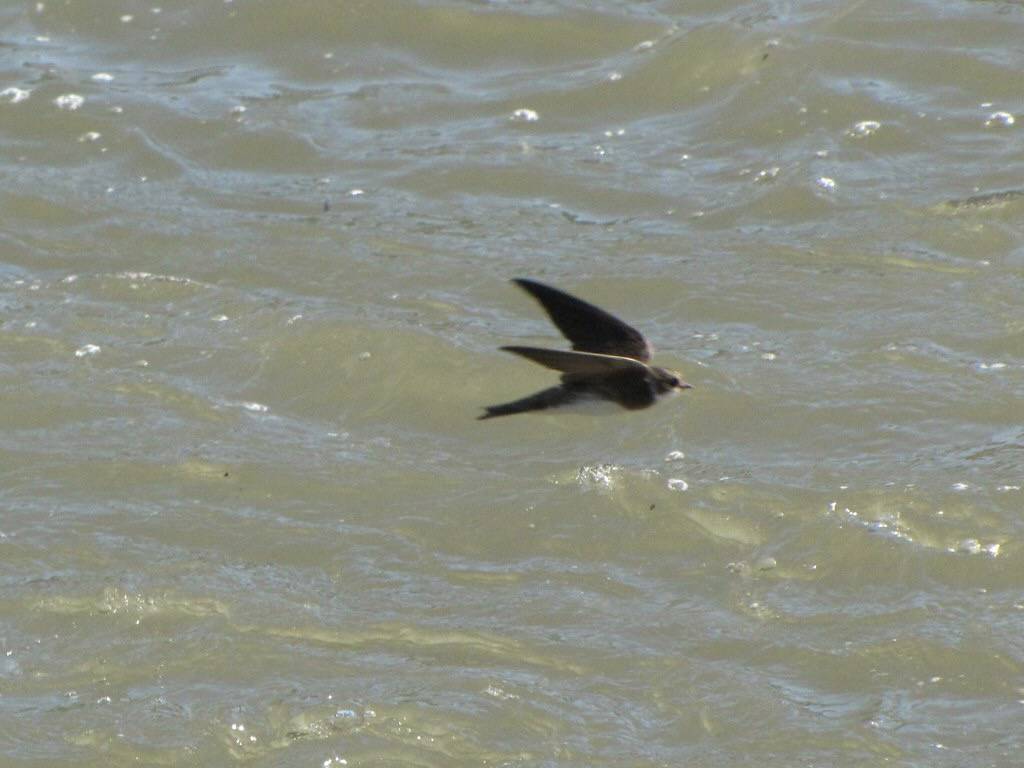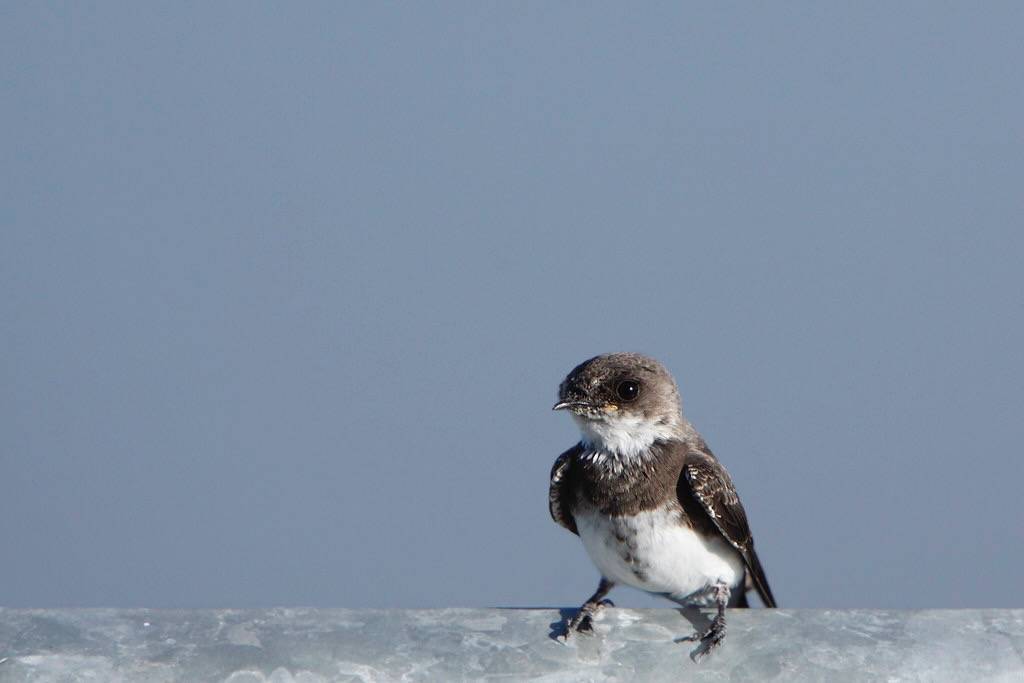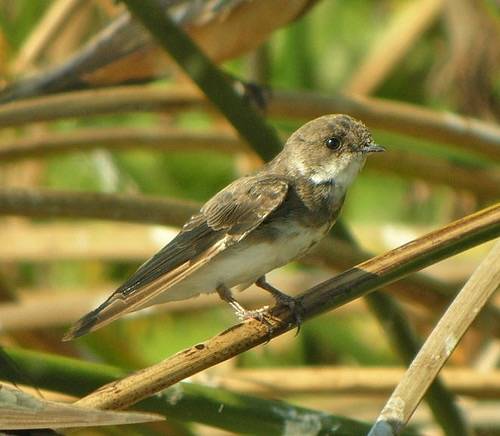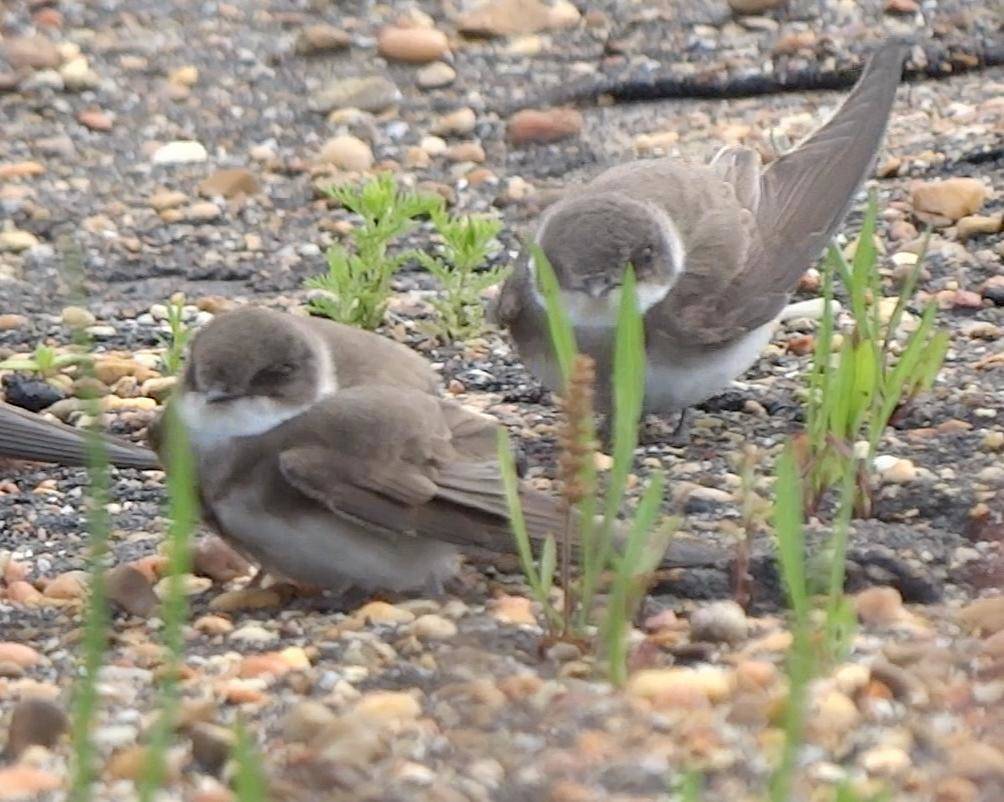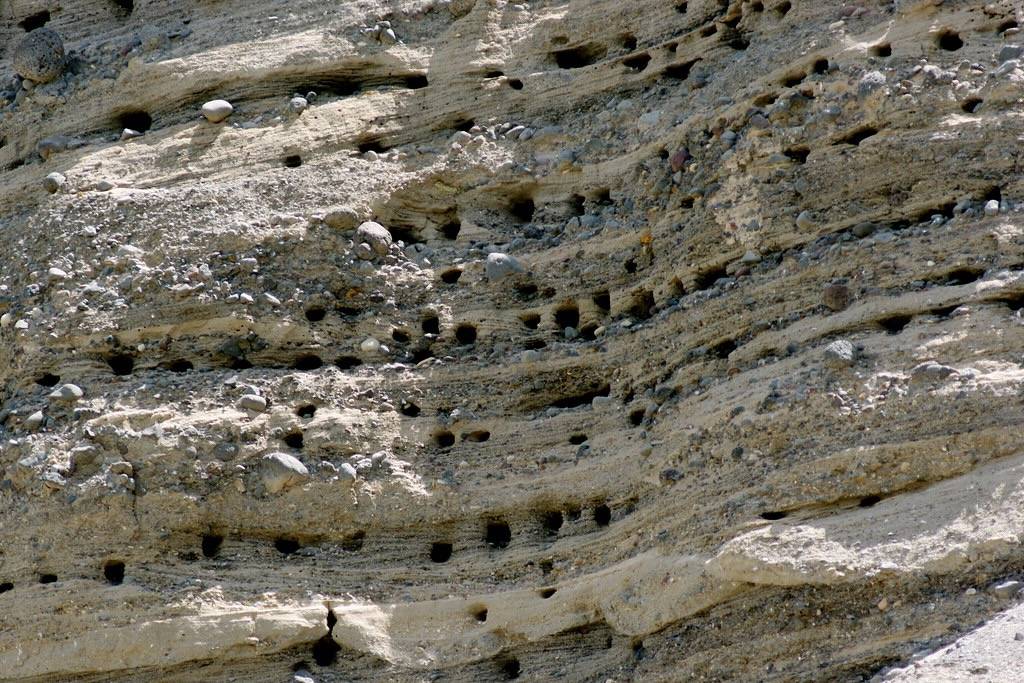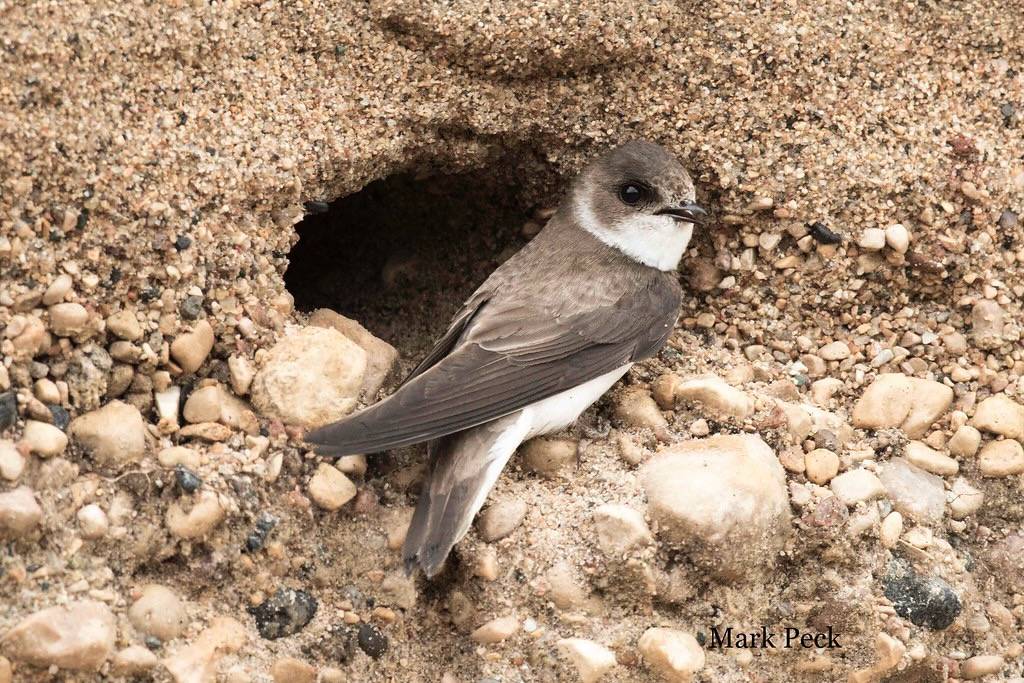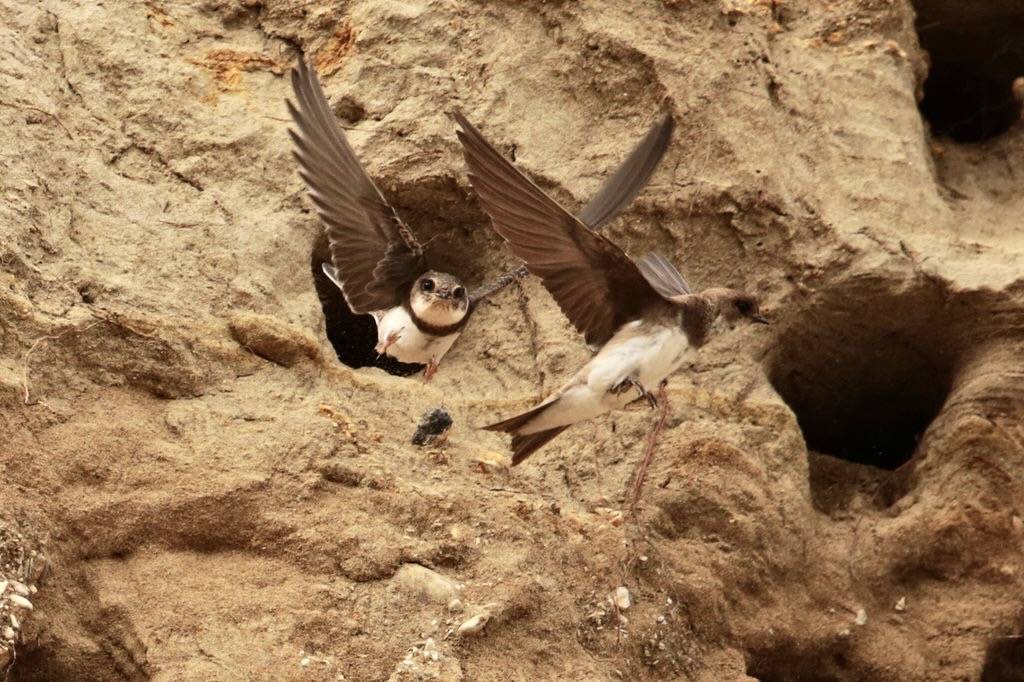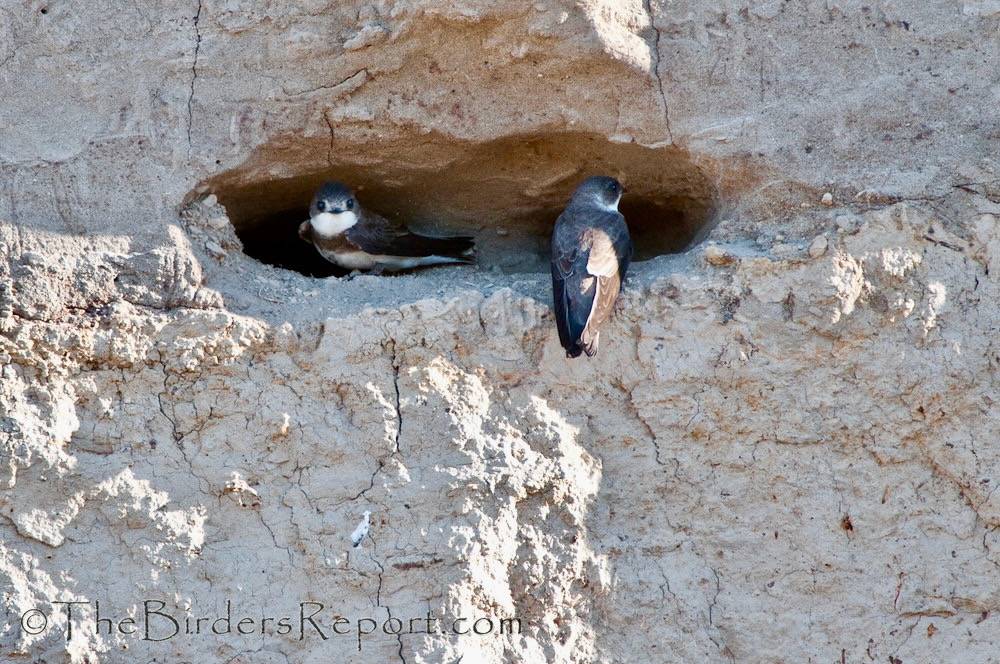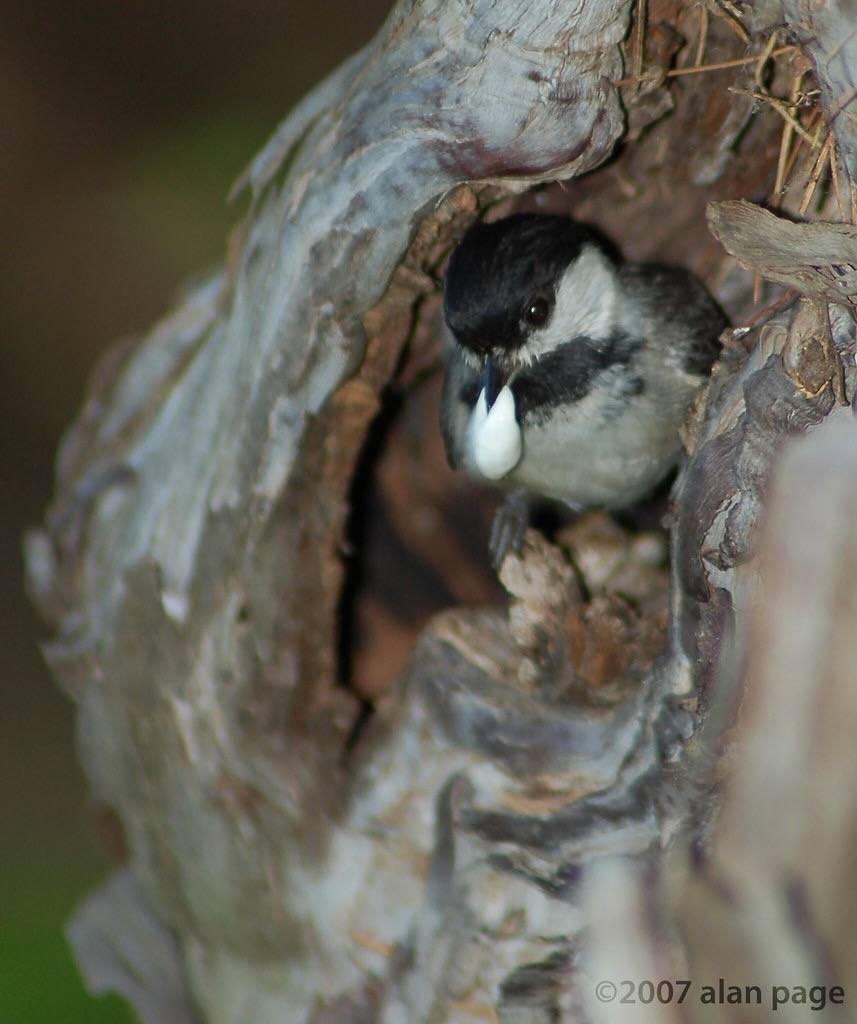Bank Swallow
If you see a small swallow that is brown above and white below with a narrow brown band across its breast, you've spotted a Bank Swallow. Available records since 2002 indicate that it has only been seen twice in the park. Salter Grove has a great diversity of habitat types including large expanses of open water, but it does not offer the tall sandy banks suitable for building nest holes.
Depending on the availability of space on a suitably tall and sandy cliffside, Bank Swallows may nest in colonies numbering from a few dozen to hundreds of pairs. The nest is placed at the end of an excavated tunnel ranging from several inches to four feet deep. Feces produced by nestlings are enclosed in a membranous fecal sac that parents remove from the tunnel to maintain a sanitary nesting environment for as long as possible.
Like other swallows, the Bank Swallow feeds on flying insects such as bees, wasps, ants, butterflies, and moths. It can be confused with the Northern Rough-winged Swallows which is also a small brown swallow, and which has been observed in the same months at Salter Grove. However, the Rough-winged Swallow lacks the brown breast band and does not fly with jerky movements.
The Bank Swallow has a Holarctic breeding range that includes North America and Europe. It winters in South America, eastern and southern Africa, and the Indian sub-continent. Because it is so wide-ranging, it has at least two other common names: European Sand Martin in Europe, and Collared Sand Martin in India.

